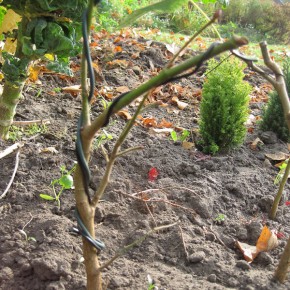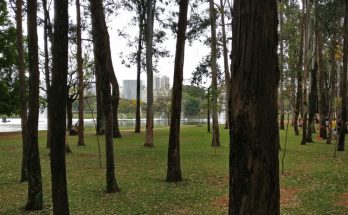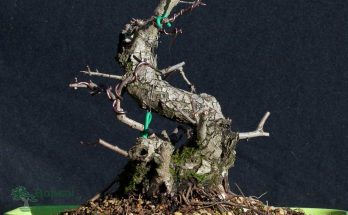 In a continuation of our growing bonsai trunks series, now we discuss the method known as the grow and bend technique. This is a good method for all species that create lots of side-branches.
In a continuation of our growing bonsai trunks series, now we discuss the method known as the grow and bend technique. This is a good method for all species that create lots of side-branches.
The idea
If you have a young plant which you would like to grow into a bonsai, but you do not want to have big cut-marks on the tree, this is a good method. The basic idea it that you let a young sapling grow out. And as the main stem starts to lignify later in the growing season, you bend the main stem down, and place a side branch in its place.
How it works
Side branches have the tendency to thicken slower than the main trunk. This because of the high number of branches developing along the main trunk. By bending the main trunk down, and putting a side-branch in place, one obtaines a strong taper, by reducing the height & tickness of the new section. Naturally, this may be combined with trimming of the branch and/or main trunk (See image). If one does not trim the main trunk, one could leave it on for a season or two, and grow it out as a sacrificy branch.
Benefits
By repeated bending of the main stem, one can create dramatic taper with only very small cut wounds
Down sides
This technique is very slow to create a tree. But this may be sped up by leaving the main trunk on the tree, and treating it as a sacrifice branch.
Suitable species
This is especially usefull for species that grow many side-branches, which start already soon after the first growth (So at the base of each year’s trunk section). Think Acer, Beech, Larix.





So in this technique you use convert the apex of the trunk into a side branch and continue to use another branch to create a taper effect? If that is the case. Wouldn’t the bent branch be too big for being up there? Don’t you want smaller branches on top?
Hi Jesus, naturally, in the end you want to get small branched in the top. This is a development technique. Building a bonsai you start from the roots, to trunk, primary branchees and then the rest of the branches.